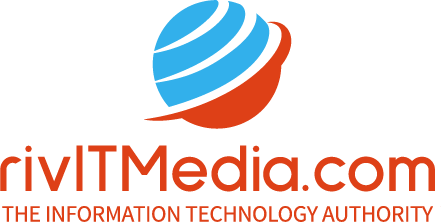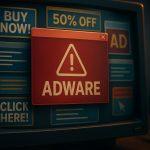A recent Mac user noticed their Safari homepage had changed unexpectedly. Pop-up ads appeared more frequently, system performance dipped, and their browser began redirecting to unfamiliar shopping sites. Upon investigation, the culprit was PracticalAccess 1.0—a deceptive application masquerading as a legitimate utility.
Threat Overview
PracticalAccess 1.0 is a type of adware specifically designed for macOS systems. It belongs to a class of potentially unwanted applications (PUAs) that sneak in via software bundling, fake update prompts, or malicious ads. Once installed, it alters browser settings, harvests user data, and floods the system with intrusive ads.
These infections may seem minor at first, but they often serve as entry points for more dangerous payloads.
In-Depth Analysis
Infection Vector
PracticalAccess typically reaches Macs through:
- Bundled installers with free software from third-party sites
- Fake Flash Player or browser update prompts
- Clickbait download buttons on pirate and freeware platforms
These delivery methods exploit user trust and neglect to disclose what’s being installed behind the scenes.
Behavioral Profile
Once installed, PracticalAccess executes the following:
- Installs itself in
/Applications/under names like “PracticalAccess,” “MPlayerX,” or “NicePlayer” - Drops persistence files in:
/Library/LaunchAgents/~/Library/LaunchAgents//Library/LaunchDaemons/
- Modifies browser settings:
- Changes default search engine and homepage
- Adds unauthorized browser extensions
- Redirects traffic to advertising networks and affiliate sites
- Tracks user data including:
- Browsing history
- IP address
- Search queries
In some cases, it opens the door to further malware by lowering system defenses and downloading additional payloads.
Risk Assessment
Though often dismissed as mere nuisanceware, PracticalAccess poses real threats:
- Security risk: Creates potential backdoors
- Privacy risk: Tracks and shares sensitive browsing data
- Financial risk: Redirects may lead to phishing or scam sites
- System degradation: High CPU usage and unstable performance
During the 2020–2022 wave of macOS adware, similar threats were seen to act as loaders for more serious infections such as banking trojans or keyloggers.
Manual Adware Removal Process (Windows & Mac)
Step 1: Identify and Uninstall Suspicious Applications
For Windows Users
- Open Task Manager by pressing
Ctrl + Shift + Esc. - Navigate to the “Processes” tab and search for unknown or high-resource-consuming processes.
- If you detect anything suspicious, right-click and select “End Task.”
- Go to
Control Panel>Programs>Programs and Features. - Locate and uninstall any unfamiliar programs.
For Mac Users
- Open
Finderand click onApplications. - Identify and move any suspicious applications to the
Trash. - Empty the
Trash. - Check
System Preferences>Users & Groups>Login Itemsfor unknown startup programs and remove them.
Step 2: Remove Malicious Browser Extensions
Google Chrome
- Open Chrome, click
Menu(three dots) >Extensions. - Locate and remove unknown extensions.
- Reset Chrome:
Settings>Reset settings> “Restore settings to their original defaults.”
Mozilla Firefox
- Click
Menu>Add-ons and themes. - Remove suspicious extensions.
- Reset Firefox:
Help>More troubleshooting information> “Refresh Firefox.”
Safari (Mac)
- Open Safari, go to
Preferences>Extensions. - Delete unknown extensions.
- Reset Safari:
History> “Clear History.”
Microsoft Edge
- Click
Menu>Extensions. - Remove any unfamiliar extensions.
- Reset Edge:
Settings>Reset settings> “Restore settings to their default values.”
Step 3: Delete Adware-Associated Files and Folders
For Windows Users
- Press
Win + R, type%AppData%, and press Enter. - Locate and delete suspicious folders.
- Repeat for
%LocalAppData%,%ProgramData%, and%Temp%.
For Mac Users
- Open Finder and press
Shift + Command + G, then enter~/Library/Application Support/. - Remove any suspicious folders.
- Repeat for
~/Library/LaunchAgents/,~/Library/LaunchDaemons/, and~/Library/Preferences/.
Step 4: Flush DNS Cache to Remove Adware Traces
For Windows Users
- Open
Command Promptas Administrator. - Type
ipconfig /flushdnsand press Enter.
For Mac Users
- Open
Terminal. - Enter
sudo killall -HUP mDNSResponderand press Enter.
Step 5: Restart Your System
Perform a reboot to apply the changes and ensure the removal process is complete.
Automatic Adware Removal Using SpyHunter (Windows & Mac)
For an effortless and effective solution, use SpyHunter, a powerful anti-malware tool designed to detect and remove adware completely.
Step 1: Download SpyHunter
Click the link to download SpyHunter: Download SpyHunter Here.
Step 2: Install SpyHunter
Follow the installation guide based on your operating system:
For Windows Users
- Run the downloaded
.exefile. - Follow the installation instructions.
- Launch SpyHunter and allow it to update its malware database.
For Mac Users
- Open the downloaded
.dmgfile. - Drag and drop SpyHunter into
Applications. - Open SpyHunter and let it update its database.
Step 3: Scan and Remove Adware
- Open SpyHunter.
- Click
Start Scan. - Wait for the scan to complete.
- Click
Fix Threatsto remove detected malware.
Step 4: Restart Your Computer
After SpyHunter removes all threats, restart your system to ensure all adware components are fully removed.
Conclusion
PracticalAccess 1.0 may disguise itself as a harmless app, but its behavior reveals a more sinister role—surveillance, advertising fraud, and system compromise. Timely identification and thorough cleanup are essential. Manual removal backed by automated tools ensures nothing is left behind. Don’t let a minor annoyance evolve into a full-blown infection.




